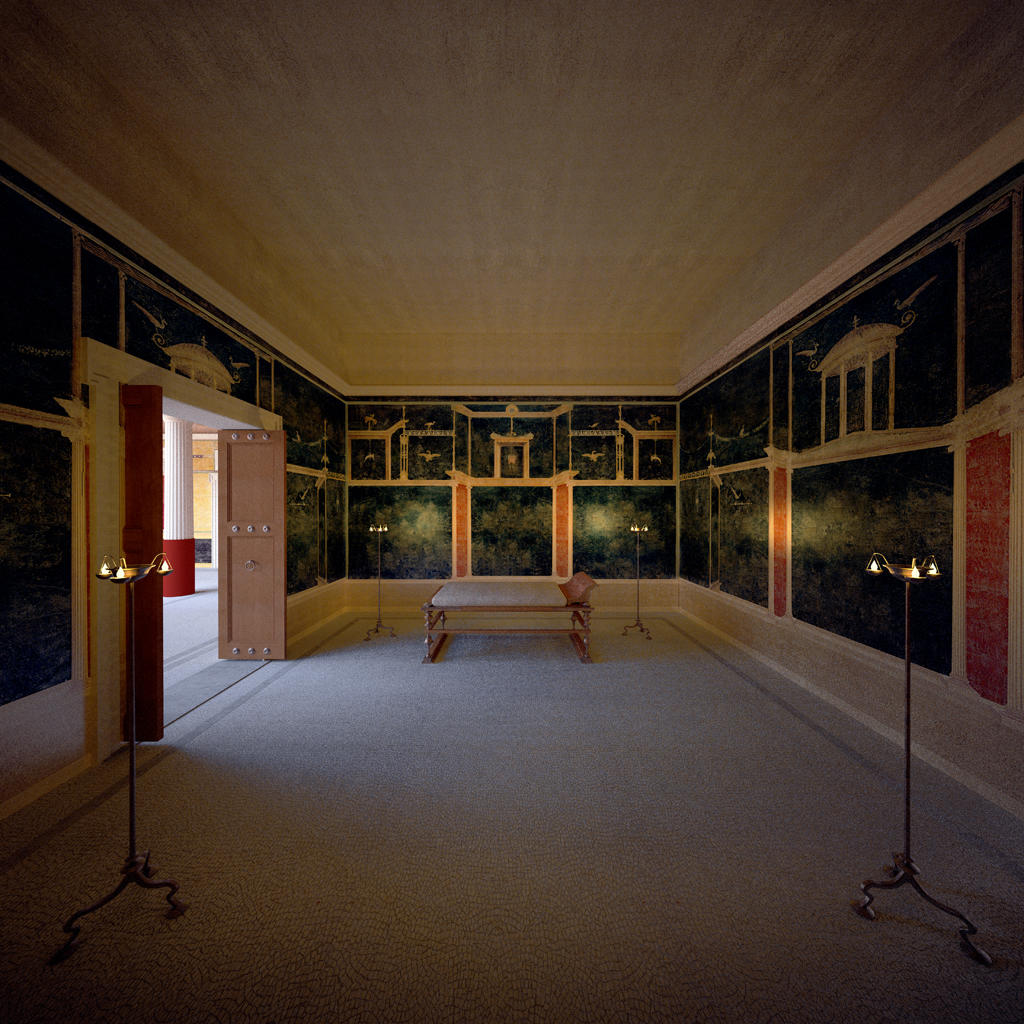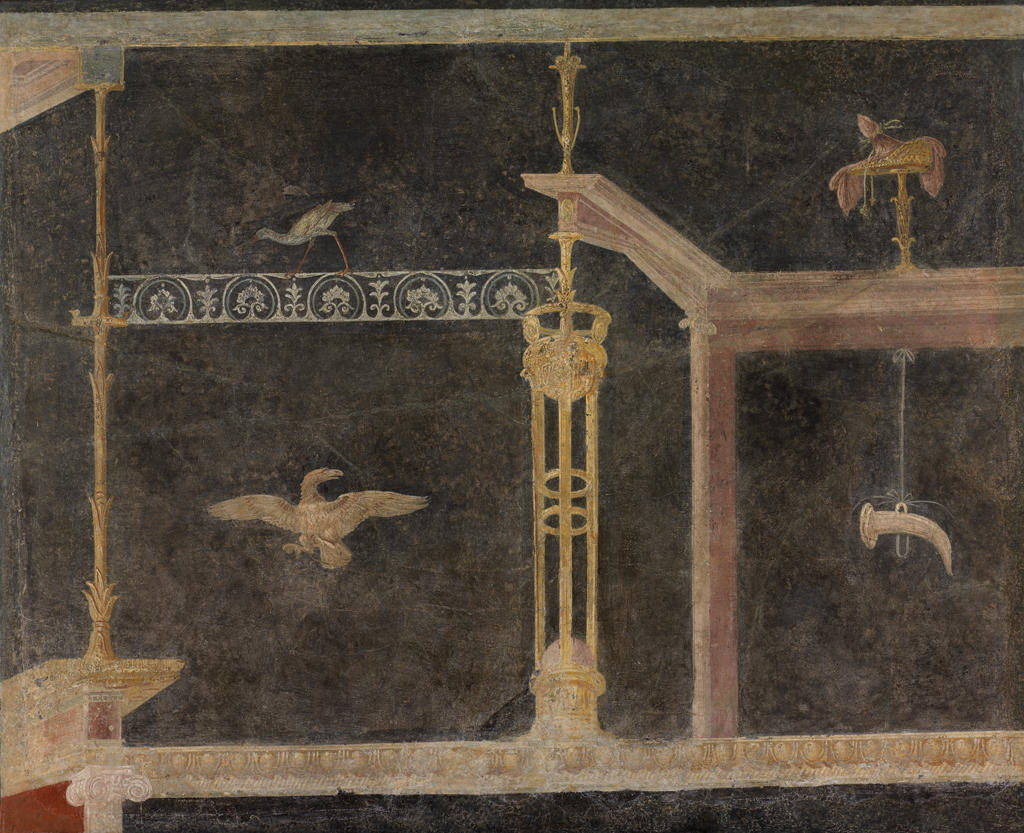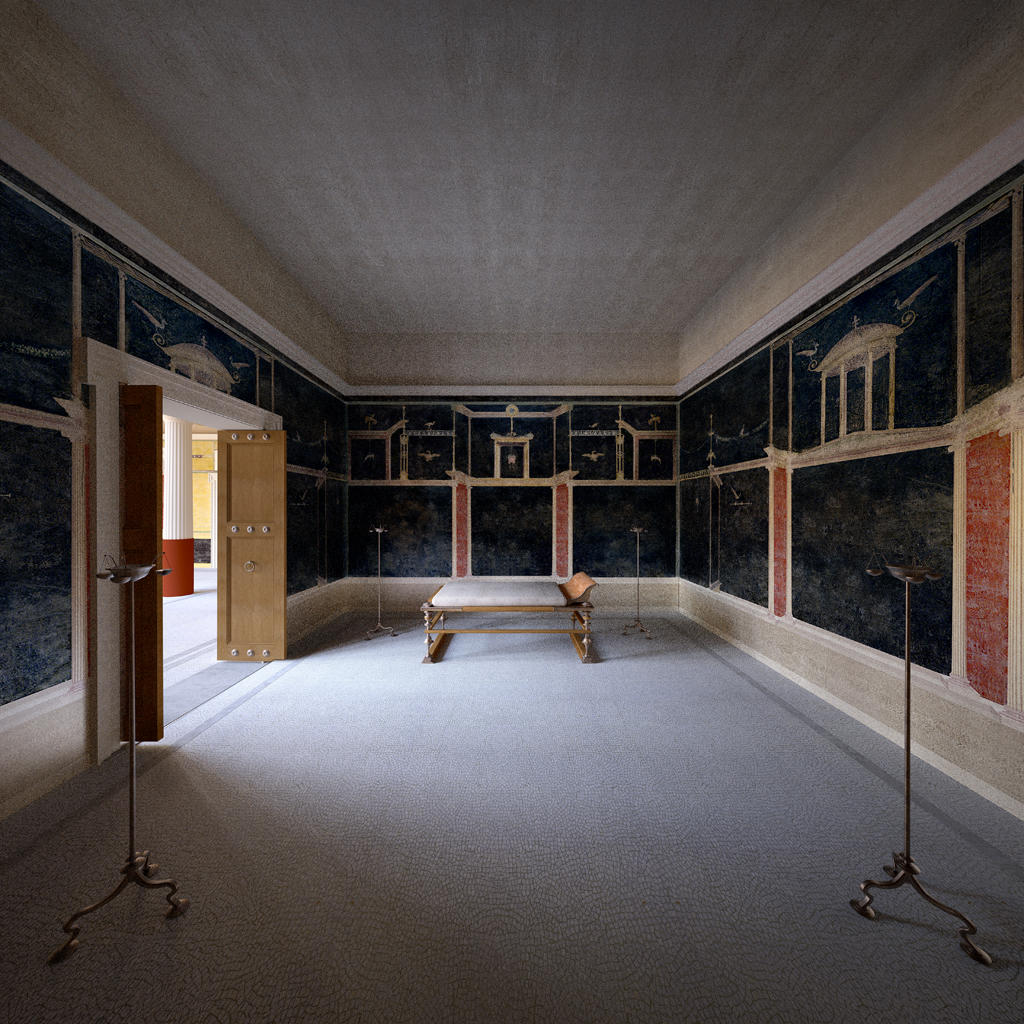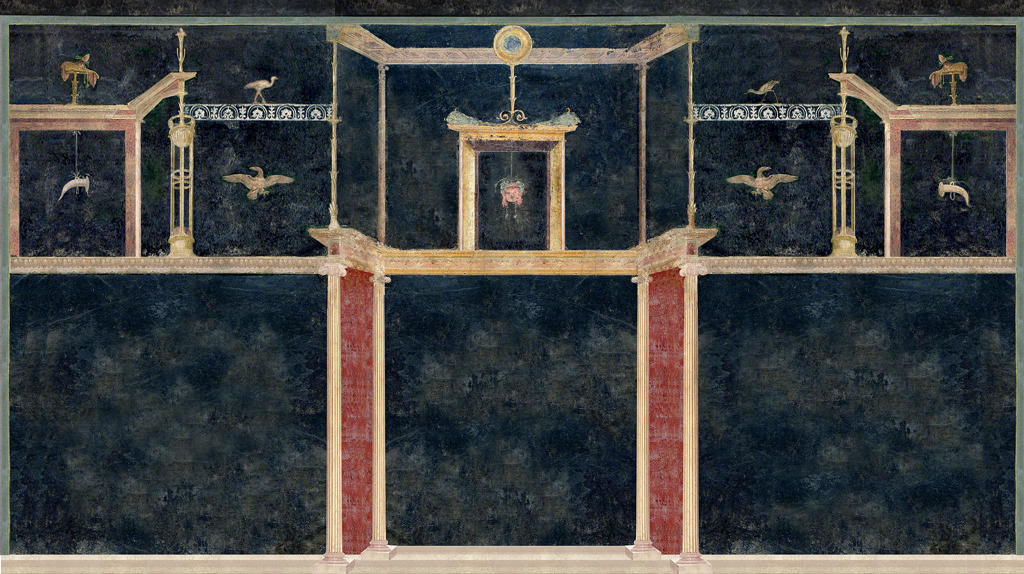When we see fragments of Roman wall paintings framed and hanging on museum walls, it is difficult for us to imagine that these were not created as stand-alone works of art, as modern paintings were. Taken out of houses in and around Pompeii, these fragments were originally parts of whole compositions that enlivened the walls — from floor to ceiling—of Roman rooms. In the following entry, architect James Stanton-Abbott explains his process for creating a computer-rendered reconstruction of a room in an ancient Roman villa near Pompeii, using images of wall-painting fragments in the RISD Museum and the MFA, Boston.
The intent of the reconstruction of the Black Room at the Villa Fondo Bottaro is to place the segments of the frescoes owned by the RISD Museum and the MFA Boston into a coherent context, expanding the viewer's understanding of how the frescoes would have been seen and experienced in the villa itself. Using the most accurate means of reproducing the light and materials in the rendering of the Black Room will show the sensibility of the space as well as the purely graphical representation of the frescoes themselves.
This initial reconstruction is a first look at recreating the feeling and experience of a space that no longer exists, and can be seen as a tool for developing a more inclusive understanding of the villa and its associated artwork. Whether the fresco work can be categorized as third or fourth style of Pompeian painting or somewhere in between is not the concern of this reconstruction.
The reconstruction of the frescoes in the Black Room is based on outline drawings by Mary Winkes in the publication *Roman Paintings and Mosaics* by Rolf Winkes (Providence, Rhode Island: Museum of Art, Rhode Island School of Design, 1982, p. 19). The drawings show a symmetrical arrangement of the two wall fragments on either side of a central motif. The wall fresco at RISD has an aedicula with a mask at its center, and the fresco at the MFA has a pavilion as a central motif. However, because of water damage to the lower part of the villa walls, the reconstruction of lower section of the frescoes is hypothetical.
Based on assumptions and choices I have made, the full height of the wall frescoes consists of:
- An upper section, which contains the fresco fragments in the museum collections.
- A middle section that is a hypothetical reconstruction, although the central element with Ionic columns and red infill is based on the lower corners of the RISD and MFA fragments above it. No detailed imagery is shown in the large black panels, as there is no record of this. (It is likely that some form of image would have existed, however, as evidenced by the other black frescoes in the Museum of Fine Arts in Boston, and as shown in the Black Room rendering.)
- A socle or base, a typical element, is shown as a continuous neutral band, as there is no evidence of any other detail that might have been part of the overall scheme.
There is no record of how many frescoes were removed from the villa at the time of excavation in 1899–1902, or where their location within the villa might have been. Therefore, the placement of the two different black wall reconstructions within the room is hypothetical.
The doors: In general the doors, frames, and hardware are based on a work by Roger Ulrich about Roman construction techniques, Roman Woodworking (New Haven: Yale University Press, 2007).
The reconstruction is the copyright of James Stanton-Abbott. Any mistakes or overreaching in interpretation of the reconstruction are entirely my own.




